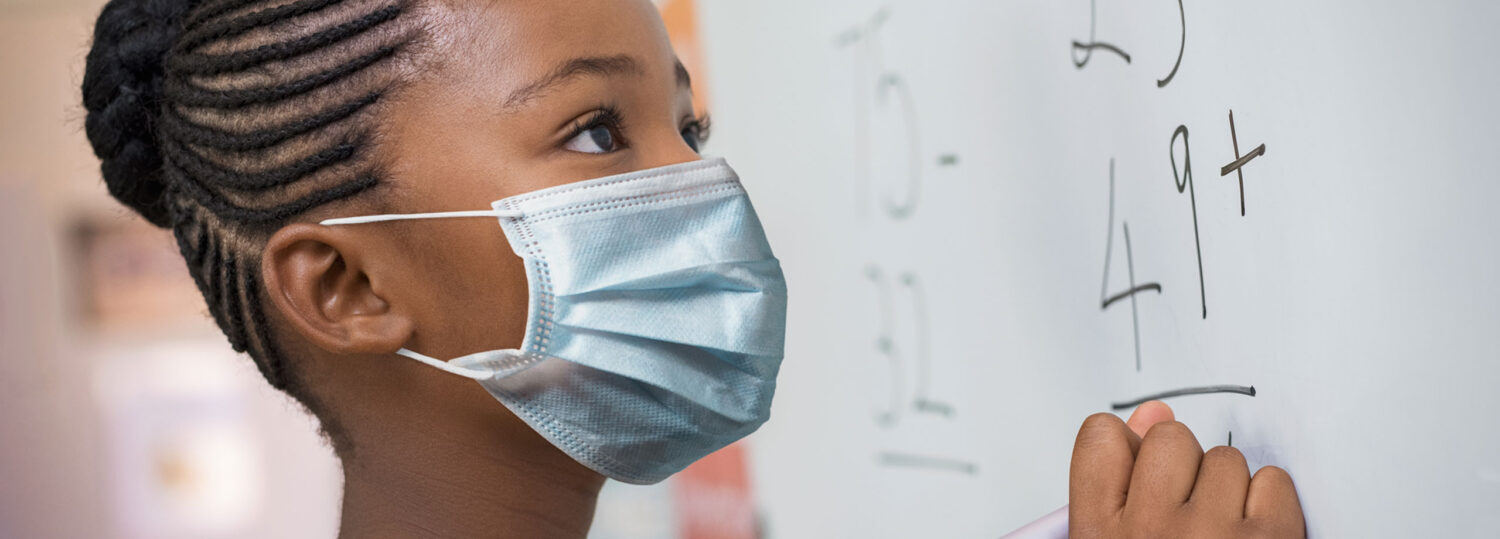
School-level COVID-19 Modeling Results for North Carolina
Last updated: 08/05/2021
NOTE: We want to thank the Center for Health and Humanitarian Systems at Georgia Tech for their collaboration with building these models.
Recently we developed a simple model to illustrate COVID-19 spread within a hypothetical school over the course of a semester, given different assumptions regarding mask usage, incoming protection, and testing policies.
Students are returning to classrooms at a time when the Delta variant of Covid-19 is circulating. The Delta variant is about 50% more infectious than the Alpha variant, which was as much as 50% more infectious than earlier strains in the US. That means Covid-19 is now significantly more transmissible than it was in the previous school year.
Our modeling found that without masks or regular testing, up to 90% of susceptible students may become infected by the end of the semester. This high rate of infection would result in frequent quarantines of students and transmission to others.
We recognize the importance of in-person schooling, to increase learning, promote the positive mental health of students, and support students in poverty. Many in our group also have children who will be attending schools at all levels.
Masks and testing, when used in combination, can prevent 80% of new infections. While these strategies cannot prevent all, when used effectively, school districts can maximize the amount of time students are present for in-person instruction. This is particularly important in schools with children below age 12, such as elementary, middle, or all-grade schools. Children below age 12 do not have an option for vaccination yet, so they are at particular risk for both acquiring and spreading disease.
The harm of new infections goes beyond the school. Exposed students can bring the virus home to infect younger siblings, pregnant mothers, and other vulnerable adults such as those with compromised immune systems.
Dashboard (Beta version)
The objective of this dashboard is to illustrate the estimated proportion of susceptible students infected in a hypothetical school of 500 throughout a semester resulting from the COVSIM K12 model, depending on masking policies and testing policies. The user should select an R0 value, which relates to the infectivity of the virus. R0=4 represents a conservative estimate for the Delta variant, R0=5 is also an option. Incoming protection level represents the proportion of students that begin the school year with some protection, either from vaccination or from the previous infection. The 30, 40, and 50% scenarios are used to illustrate elementary, middle, and high school settings, though lower levels are available to choose from.
Scenarios:
Intervention strategies include “universal masking” and “testing”. Universal masking means face coverings are required, however, these may range in quality and may not be worn properly at all times.
Testing strategies refer to randomized testing of asymptomatic individuals. “PCR_50” refers to randomly testing 50% of students weekly with polymerase chain reaction (PCR) tests, while RA_50 refers to randomly testing 50% of students weekly with rapid antigen tests.
Please download the slides for more details about model assumptions.
The videos below summarize our research in more detail.
A pre-print article with these results can be found here on the MedRxiv platform, which includes additional details about the model structure. For coverage of these results by Katelyn Jetelina at ‘Your Local Epidemiologist,’ a reputable public health blog during COVID-19, please see this blog post.
The slides are currently broken up into those on the model background and those on the model results, which are accessible “beneath” their corresponding videos below. Download a combined slide deck.
